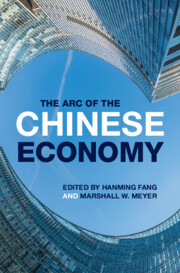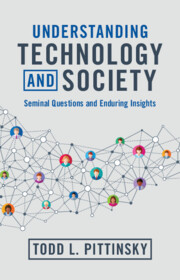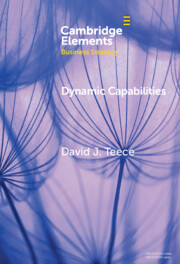Refine search
Actions for selected content:
670 results
3 - Innovation in China
-
-
- Book:
- The Arc of the Chinese Economy
- Published online:
- 30 October 2025
- Print publication:
- 13 November 2025, pp 67-98
-
- Chapter
- Export citation
1 - The Arc of the Chinese Economy
-
-
- Book:
- The Arc of the Chinese Economy
- Published online:
- 30 October 2025
- Print publication:
- 13 November 2025, pp 1-46
-
- Chapter
- Export citation
3 - The Entrepreneurial State
-
- Book:
- States of Transition
- Published online:
- 31 October 2025
- Print publication:
- 13 November 2025, pp 59-90
-
- Chapter
- Export citation

The Arc of the Chinese Economy
-
- Published online:
- 30 October 2025
- Print publication:
- 13 November 2025
14 - Drugs
-
- Book:
- Applied Healthcare Economics
- Published online:
- 26 September 2025
- Print publication:
- 16 October 2025, pp 308-327
-
- Chapter
- Export citation
Concluding Remarks
-
- Book:
- A Datafied Mind
- Published online:
- 27 September 2025
- Print publication:
- 09 October 2025, pp 190-194
-
- Chapter
- Export citation
Milestones in paediatric cardiology: how prostaglandins revolutionised the management of CHD
-
- Journal:
- Cardiology in the Young / Volume 35 / Issue 10 / October 2025
- Published online by Cambridge University Press:
- 02 October 2025, pp. 1969-1974
-
- Article
-
- You have access
- HTML
- Export citation

Understanding Technology and Society
- Seminal Questions and Enduring Insights
-
- Published online:
- 30 September 2025
- Print publication:
- 10 July 2025

A Datafied Mind
- Untangling EU Regulation of Emotion Technology and Neurotechnology
-
- Published online:
- 27 September 2025
- Print publication:
- 09 October 2025
To advance translational science, remove these roadblocks to studying team knowledge integration
-
- Journal:
- Journal of Clinical and Translational Science / Volume 9 / Issue 1 / 2025
- Published online by Cambridge University Press:
- 18 September 2025, e210
-
- Article
-
- You have access
- Open access
- HTML
- Export citation

Dynamic Capabilities
- Foundational Concepts
-
- Published online:
- 04 September 2025
- Print publication:
- 02 October 2025
-
- Element
-
- You have access
- Open access
- HTML
- Export citation

Dynamic Capabilities and Related Paradigms
-
- Published online:
- 03 September 2025
- Print publication:
- 02 October 2025
-
- Element
-
- You have access
- Open access
- HTML
- Export citation
Conclusion
-
- Book:
- AI versus IP
- Published online:
- 09 August 2025
- Print publication:
- 28 August 2025, pp 130-132
-
- Chapter
- Export citation
Introduction
-
- Book:
- AI versus IP
- Published online:
- 09 August 2025
- Print publication:
- 28 August 2025, pp 1-6
-
- Chapter
- Export citation
Toward a conceptual framework for AI and robotics in aging in place: insights from constructivist grounded theory
-
- Journal:
- Proceedings of the Design Society / Volume 5 / August 2025
- Published online by Cambridge University Press:
- 27 August 2025, pp. 3121-3129
-
- Article
-
- You have access
- Open access
- HTML
- Export citation
Sustainable legume-based foods: from collaborative diagnosis to co-creative concepts
-
- Journal:
- Proceedings of the Design Society / Volume 5 / August 2025
- Published online by Cambridge University Press:
- 27 August 2025, pp. 2981-2990
-
- Article
-
- You have access
- Open access
- HTML
- Export citation
Customer engagement, digitalization, and business performance: a model for digital startups
-
- Journal:
- Proceedings of the Design Society / Volume 5 / August 2025
- Published online by Cambridge University Press:
- 27 August 2025, pp. 1071-1080
-
- Article
-
- You have access
- Open access
- HTML
- Export citation
Advancing in-process innovation metrics: a framework for navigating uncertainty
-
- Journal:
- Proceedings of the Design Society / Volume 5 / August 2025
- Published online by Cambridge University Press:
- 27 August 2025, pp. 339-348
-
- Article
-
- You have access
- Open access
- HTML
- Export citation
A product transformation approach to exploit existing production assets applied to the automotive supplier industry
-
- Journal:
- Proceedings of the Design Society / Volume 5 / August 2025
- Published online by Cambridge University Press:
- 27 August 2025, pp. 239-248
-
- Article
-
- You have access
- Open access
- HTML
- Export citation
A dual perspective on validation during early development projects - insights from literature and industry
-
- Journal:
- Proceedings of the Design Society / Volume 5 / August 2025
- Published online by Cambridge University Press:
- 27 August 2025, pp. 61-70
-
- Article
-
- You have access
- Open access
- HTML
- Export citation
